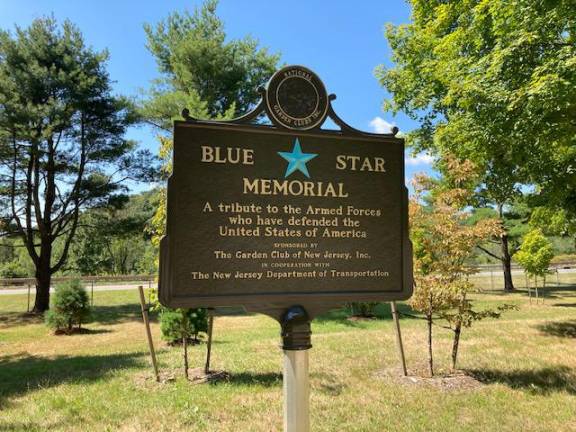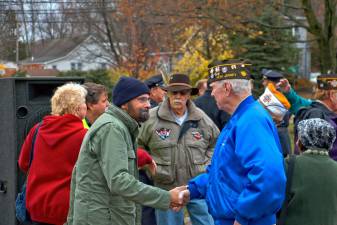Part of Route 23 designated ‘Blue Star Highway’
Newfoundland. New sign designates section of Route 23 as “Blue Star Highway,” a tribute to those who served in the armed forces. It is one of 40 designated locations throughout the state.

A new sign has been erected in the park-rest area of Route 23 in Newfoundland, recognizing the highway as part of the “Blue Star Highway.”
It is a tribute to those who served in the Armed Forces. This is one of 40 designated locations for signs throughout the state. The movement is sponsored by the Garden Clubs of New Jersey Inc. in cooperation with the New Jersey Department of Transportation.
The message on the sign reads “A Tribute to the Armed Forces who have defended the United States of America.” The Blue Star markers are placed at national cemeteries, parks, veterans’ facilities and gardens.
The National Garden Club official website reports that the program to honor those in the Military began when 8,000 dogwood trees were planted along a 5.2 mile stretch of Route 22 in Union and Somerset counties by the New Jersey Council of Garden Clubs in 1944 as a living memorial to veterans of World War II. The NJDOT helped with the project.
The blight in the 1970s wiped out many dogwood trees that nature annually replanted along Route 511 (Greenwood Lake Turnpike) and Skyline Drive in the Ringwood/West Milford areas near the Wanaque Reservoir. That blight also killed the dogwood trees along Route 22.
After the first Blue Star Roadway was established the New Jersey Legislators designated the memorial and banned posting of billboards along the route. That same year State Garden Clubs adopted this program and began the Blue Star Highway system that covers thousands of miles across the continental United States, Alaska and Hawaii. Signs were placed along the route.
Blue Star flags go back to World War I when Army Capt. Robert Queissner created a simple flag to tell others that two of his sons were serving in the military in defense of the nation. Just three days after the flag first appeared The American War Mothers group was organized. Members started putting Capt. Queissner flags in their windows.
With many lives being lost in the war a new flag was designed and mothers who lost sons started sewing a gold star over that blue star. There were 560,000 people serving in the military during World War II and 10,372 lost their lives. After the war the flags that were so popular in World War I and World War II were no longer displayed. However, they did return following the Vietnam War and again were visible in the windows of many homes.
A Blue Star Highway location must be designated in accord with state legislation. There must be approval by a seven-member Blue Star Council. This group includes a representative from the NJDOT, one from the Department of Military and Veterans Affairs and the NJDEP.
